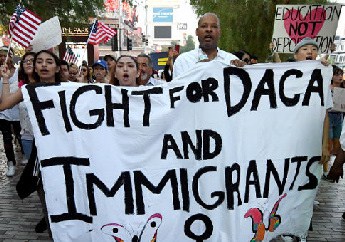Addressing the development challenge of crime and violence in the Caribbean
GREATER GEORGETOWN, Guyana – One of the major challenges now threatening the development agenda within the Caribbean Region is the thorny issue of increasing crime and violence, much of which is said to be driven by “the cultivation, manufacture and transportation of narcotic drugs, illicit sales and trafficking of weapons and the trafficking of persons.”
The World Bank in its 2007 Report – Crime, Violence and Development Trends, Costs and Policy Options in the Caribbean – points to the high rates of crime and violence in the region having both direct effects on human welfare and on economic growth and social development, thus mooting crime as a development problem.
Implicit in that Report also is the notion that there has been an over-dependence on reactive punitive judicial measures to reducing crime to the detriment of other proactive preventive approaches focusing primarily on mitigating the social factors contributing to crime and violence.
At the very highest levels, there is consensus that the propensity to resort to illicit means of survival may be minimised if we can reduce poverty; unemployment which produces feelings of relative deprivation; social and political inequality which produces the feeling of unfair treatment and injustices; and promote access to education and skills training to facilitate employability and entrepreneurship.
Therefore, for crime and violence to be addressed within this development paradigm, the policies to deal adequately with this vexed issue must be multi-sectoral in scope and must be reinforced by a spirit of international cooperation. According to Dr Edward Greene, Assistant Secretary-General Human and Social Development “crime and security is an international problem requiring international solutions.”
And it is against this backdrop that the 12th Special Session of the Council for Human and Social Development (COHSOD) in March 2008 mandated the CARICOM Secretariat to collaborate with international organisations and Third States in developing a regional crime prevention initiative to complement the national and bilateral efforts already in train.
The response to this mandate is now manifest in the Draft Caribbean Community Social and Development Crime Prevention Action Plan, crafted to address the development challenges posed by high levels of crime and violence in the Region.
This Action Plan has been developed in tandem with the United Nations Office of Drugs and Crime (UNODC) to “prevent and reduce levels of violence and crime in Member States, through a cross-sectoral and multi-disciplinary approach…”
It has five major pillars which are inextricably linked with the regional development agenda: reduce violence, foster social inclusion, promote integration, empower victims and protect the environment and economic resources.
The first pillar focuses on risks and vulnerability factors in children and youth and will address key areas such as early childhood care and development, substance abuse prevention, health and security, gender-based violence, institutional violence against children and gang and gun violence among youth.
The Action Plan assumes that crime and violence would be reduced by building resilience to risk factors through measures to include marginalised and at-risk groups, particularly unattached youth into the social, cultural, political and economic life of their countries including participation in the decision-making processes. In this regard therefore, the second pillar which focuses on fostering social inclusion will address key areas of education, employment, culture, sports and drug trade related risks.
Similarly, the Community agrees that effective re-integration of criminal offenders into their society would contribute significantly to the prevention and reduction of crime by minimising repeat offences. It is with this in mind that the third pillar of the Crime Prevention Action Plan will treat with juvenile justice, prison overcrowding, alternatives to incarceration, promotion of more effective rehabilitation activities, restorative justice and meaningful programmes for deportees.
But it does not end there, in dealing with the problem of crime and violence, it is also imperative to consider the adequacy and effectiveness of victim support services which would not only protect but empower them and therefore prevent further victimisation. The fourth pillar will therefore distil actions to address prevention of re-victimisation, police response to victims, special measures for vulnerable groups and witness protection programmes.
Finally, one cannot address crime prevention without treating with crime against the environment as this bears serious social and developmental and economic consequences. It is on this premise that the fifth pillar will attempt to raise awareness and strengthen institutional and societal responses to environmental and economic crimes as well as corruption.
The Draft Caribbean Community Social and Development Crime Prevention Action Plan, is therefore a comprehensive plan which reflects the participatory and collaborative approach to dealing with crime as a development challenge.
However, its readiness for implementation largely depends on its capacity to meet the needs of Member States and the region as a whole. It is based on this recognition that the CARICOM Secretariat will take it to the next level by subjecting it to the rigour and scrutiny of key stakeholders across the region. The benefits of such consultations should redound to charting the way forward in developing appropriate mechanisms, not only for implementing the Action Plan but also for monitoring its progress and evaluating its outcomes and impact.


